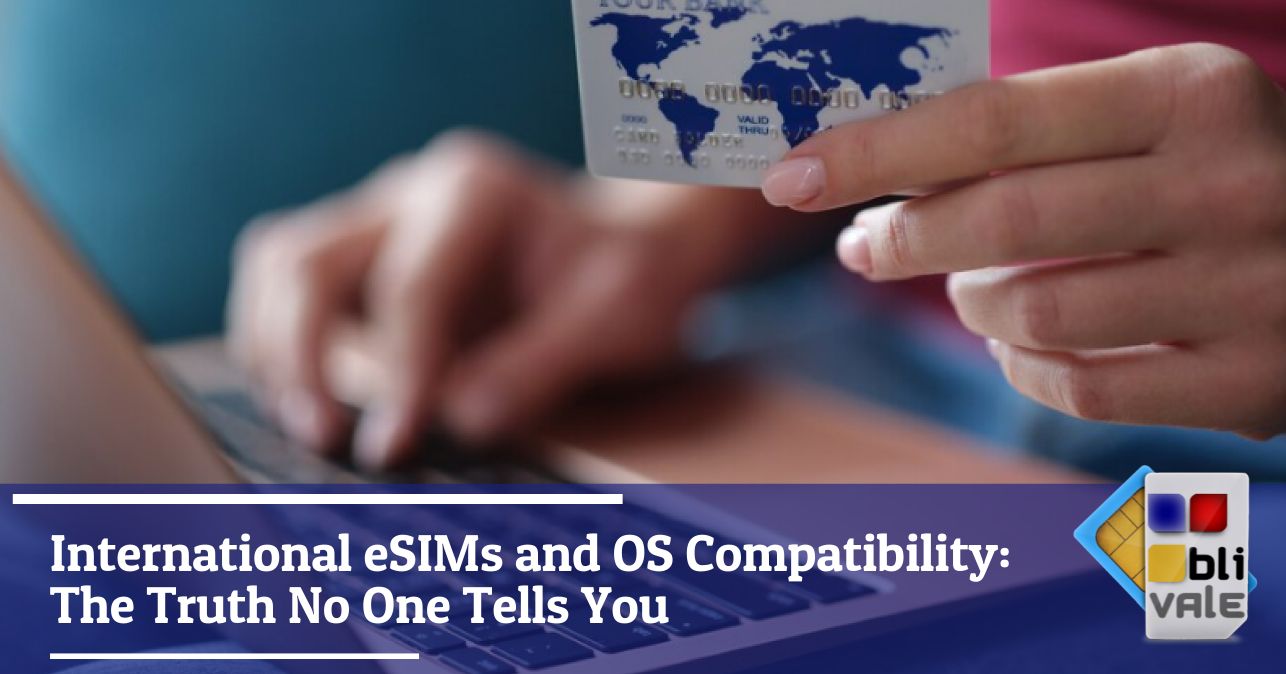If you're thinking about buying an international eSIM for your next trip, hold off for a moment. There's a crucial question that many travelers ask themselves only when it's too late: Will my eSIM actually work on my device?
The answer is not as simple as you might think. Despite promises of universality, eSIM OS compatibility hides pitfalls that could ruin your connectivity plans during an important trip.
The Myth of eSIM Universality
Many believe that international eSIMs are compatible with any modern smartphone. This is understandable: after all, eSIM technology was designed to make life easier for travelers. But the reality is more complex.
I have seen too many travelers find themselves without a connection thousands of miles from home, with a perfectly valid eSIM that is incompatible with their device. Don't let this happen to you.
eSIM OS Compatibility : The Current Situation
iOS and eSIM: The Gold Standard
Apple devices set the benchmark for eSIM compatibility. Since the iPhone XS, Apple has provided robust and reliable support for international eSIMs . iOS users rarely encounter compatibility issues, thanks to constant updates to the operating system.
Supported iOS versions:
iOS 12.1 and later for full functionality
iOS 16 and later for advanced features
Optimal support with iOS 17
Android: A Fragmented Landscape
The Android situation is more complex. Not all Android devices support eSIMs, even if they are equipped with compatible hardware. OS eSIM compatibility depends on:
Android Version : Android 9 (API level 28) minimum
Manufacturer implementation : Samsung, Google, OnePlus have different approaches
Carrier of origin : some operators block eSIM functionality
Alternative Operating Systems: Terra Incognita
Problems on phones with less popular OSes are the real challenge. Huawei’s HarmonyOS, KaiOS, and custom systems have significant limitations:
HarmonyOS : Limited and geographically restricted support
KaiOS : almost non-existent compatibility
Custom ROMs : Unpredictable Results
The Hidden Problems No One Tells You About
Obsolete Versions: The Silent Trap
Even with a theoretically compatible operating system, outdated versions create real problems:
Security bugs : Prevent eSIM activation
Outdated protocols : incompatible with new standards
Lack of Patches : Vulnerabilities That Block Connection
Regional Blockades: The Most Underestimated Problem
Here's the truth that many manufacturers prefer not to reveal: Some phones sold in specific countries have hardware or software locks that prevent the use of international eSIMs. This phenomenon is especially common with Samsung devices and some iPhone models.
Countries with Most eSIM Restrictions:
Mainland China : iPhones sold in China do not support eSIM, while some models in Hong Kong and Macau do.
CIS (Commonwealth of Independent States) countries: Russia, Belarus, Kazakhstan, Uzbekistan and other former Soviet Union countries often receive devices with disabled eSIM
African Countries : Many countries on the African continent are receiving Samsung devices without eSIM support
South Korea : Restrictions on some models to favor local operators
India : Restrictions on unofficially imported devices
Carrier Locks: The Carrier Lock Trap
Even in countries where eSIMs are supported, carrier-locked phones can completely block the use of eSIMs from different carriers. This is especially problematic in the US, where many carriers sell locked devices.
Countries with Anti-Lock Policies:
Canada : Illegal to Sell Locked Devices
Chile : Operators forced to provide unlocked devices
Singapore : Carrier lock ban
Israel : Devices must be unlocked upon request
Temporary Security Blocks
Some Samsung devices implement a security system that requires you to use a local SIM for at least 5 minutes before accepting international eSIMs. The typical error message is: "Your phone and SIM Card are from different regions".
Regional Fragmentation
What works in Europe may not work in Asia. OS eSIM compatibility varies geographically due to:
Different local regulations
Regional technical standards
Carrier-specific agreements
Regional Blocks Implemented by Manufacturers
If you are thinking of taking a trip alone or with friends or for work, do not forget the importance of staying connected wherever you are. For unlimited Internet connection, contact BLIVALE where you can get unlimited Internet according to the destinations:
For unlimited plans like data BLIVALE guarantees free roaming anywhere in the world, no additional or hidden costs. Don't let the lack of connection stop you; get ready to explore the world with freedom and spontaneity.
How to Check Compatibility Before Buying
Hardware Control
First of all, check if your device has the eSIM chip:
iPhone : Settings > General > About > Look for "Digital SIM"
Android : Settings > Connections > SIM Management > Search for "Add Mobile Plan"
Universal code : Dial *#06# and search for EID (eUICC ID)
Regional Block Control
Before purchasing an international eSIM, check if your device is region-locked:
For Samsung devices:
Go to Settings > About Phone
Check the model code (if it ends with "/DS" it often supports eSIM)
Check the sales region in the "Software Information" menu
Per iPhone:
Check the model number in Settings
Models sold in China (CH/A) do not support eSIM
Check compatibility at checkcoverage.apple.com
Region Lock Test:
Try scanning a test eSIM QR code
If "Region not supported" appears, your device is locked.
Contact technical support for final confirmations
Advanced Compatibility Tests
For a complete check:
Download official apps from eSIM providers
Run the built-in compatibility test
Check the list of supported devices on the provider's website
Solutions for Problematic Devices
Critical Updates
If your device is on the edge of compatibility:
Update your operating system immediately
Install latest security patches
Contact manufacturer support for confirmation
Unlock Devices with Carrier Lock
If your device has a carrier lock:
Contact the operator to request the unlocking
Check requirements (often 12+ month contract)
Use unlock codes if available
Consider third party services for urgent unlocking
Bypass Regional Blocks
For Samsung region-locked devices:
Use a local SIM for 5+ minutes to activate regional recognition
Change region in developer settings (for experts only)
Contact Samsung to request eSIM enablement
Alternatives for Unsupported OS
When OS eSIM compatibility is impossible:
Portable router with eSIM slot
Dedicated hotspots for international eSIMs
Traditional physical SIMs as backup
Secondary Smartphone Unlocked for eSIM
The Future of eSIM Compatibility
The situation is improving rapidly. New GSMA standards and increasing adoption promise greater universality. However, the present still requires caution and careful testing.
Ultimate Pre-Purchase Checklist
✓ Verified compatible hardware
✓ Updated operating system
✓ Carrier support confirmed
✓ Regional blocks excluded
✓ Carrier lock verified
✓ Compatibility test completed
✓ Backup plan prepared
Conclusion: Leave Nothing to Chance
eSIM OS compatibility is not a technical detail to ignore, but a crucial element to the success of your trip. Problems on phones with less popular OS are real and can compromise your experience, but even more insidious are the region locks and carrier locks that many do not consider.
Phones purchased in China, CIS, Africa, and other regions often have hidden eSIM limitations that you only discover when it’s too late. Mainland China completely blocks eSIMs on iPhones, while Samsung has historically disabled eSIMs in Africa and CIS.
Always take the time to check OS compatibility before purchasing , but most importantly, check if your device is region-locked or carrier-locked. A five-minute check can save you hours of frustration and ensure you have connectivity when you need it most.
Remember: In the digital age, staying connected is not a luxury, it's a necessity. Don't let your eSIM incompatibility cut you off from the world when you're away from home.
Technology should simplify travel, not complicate it. With the right preparation, your international eSIM will be the perfect travel companion you've always wanted.









